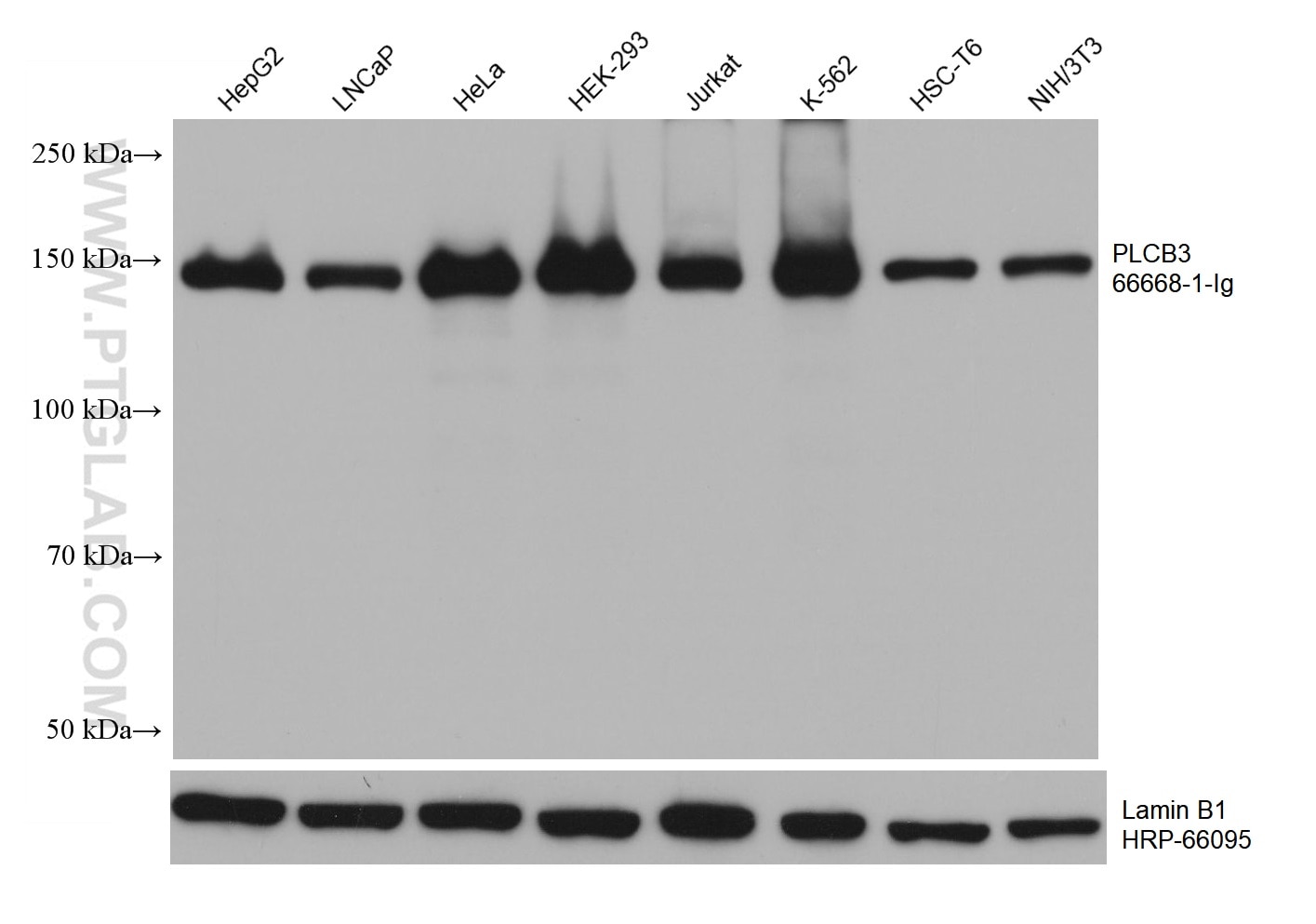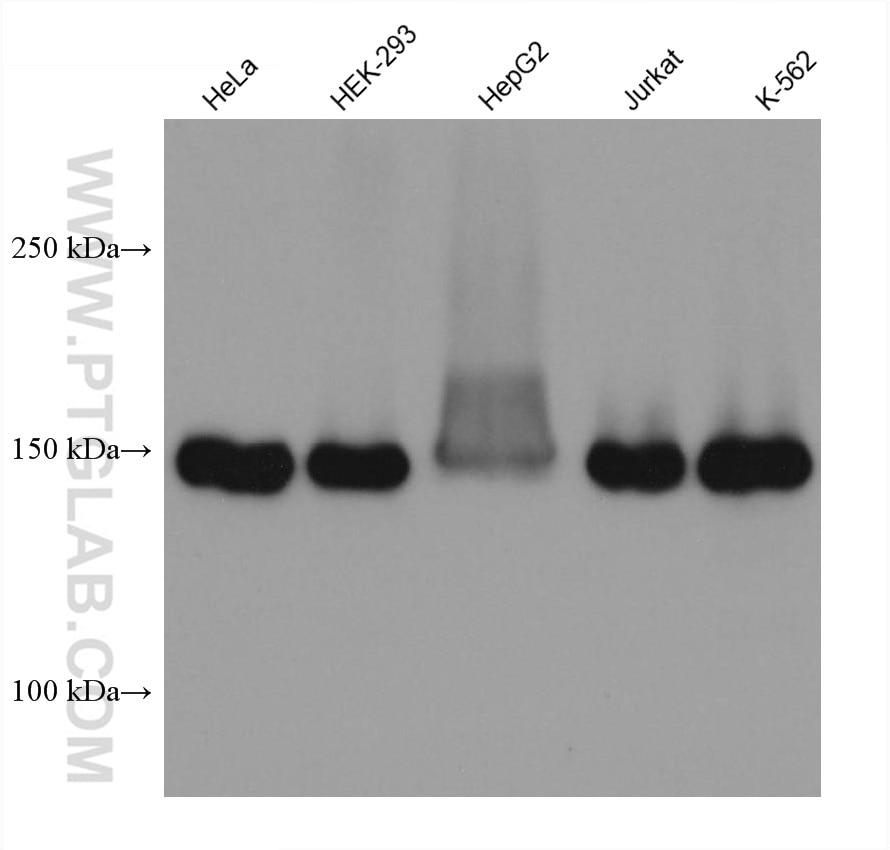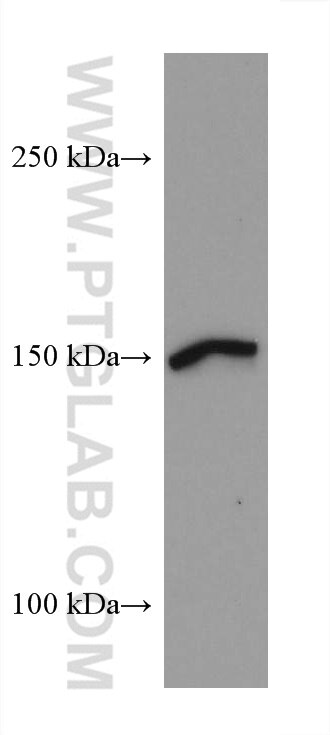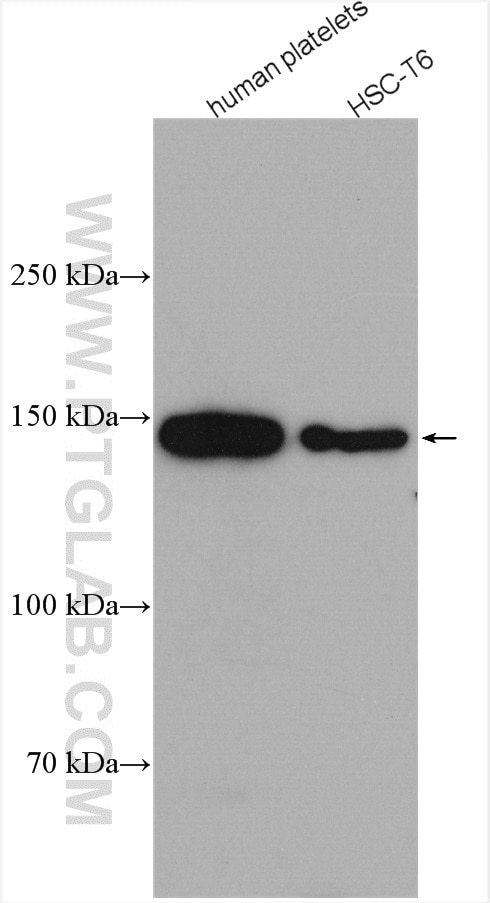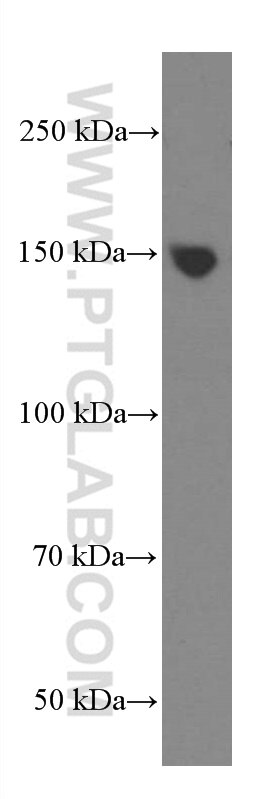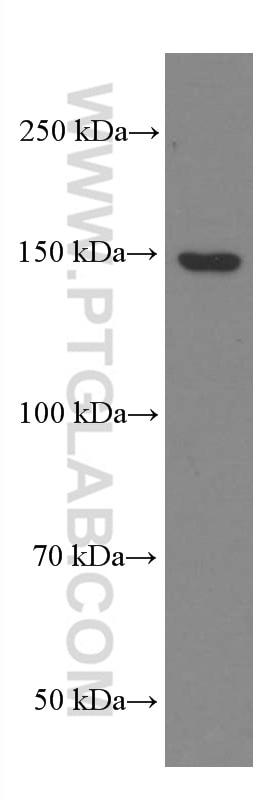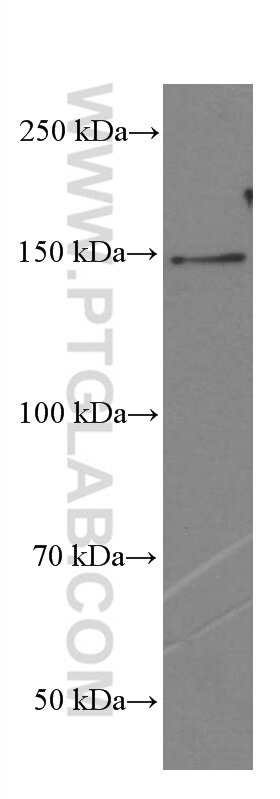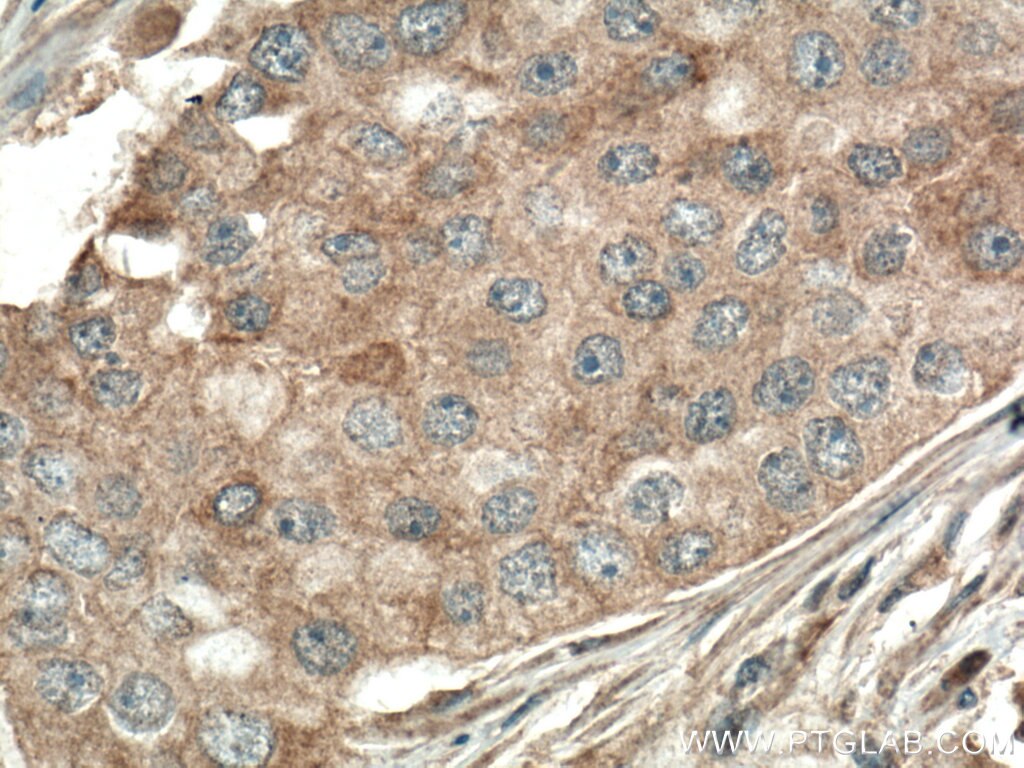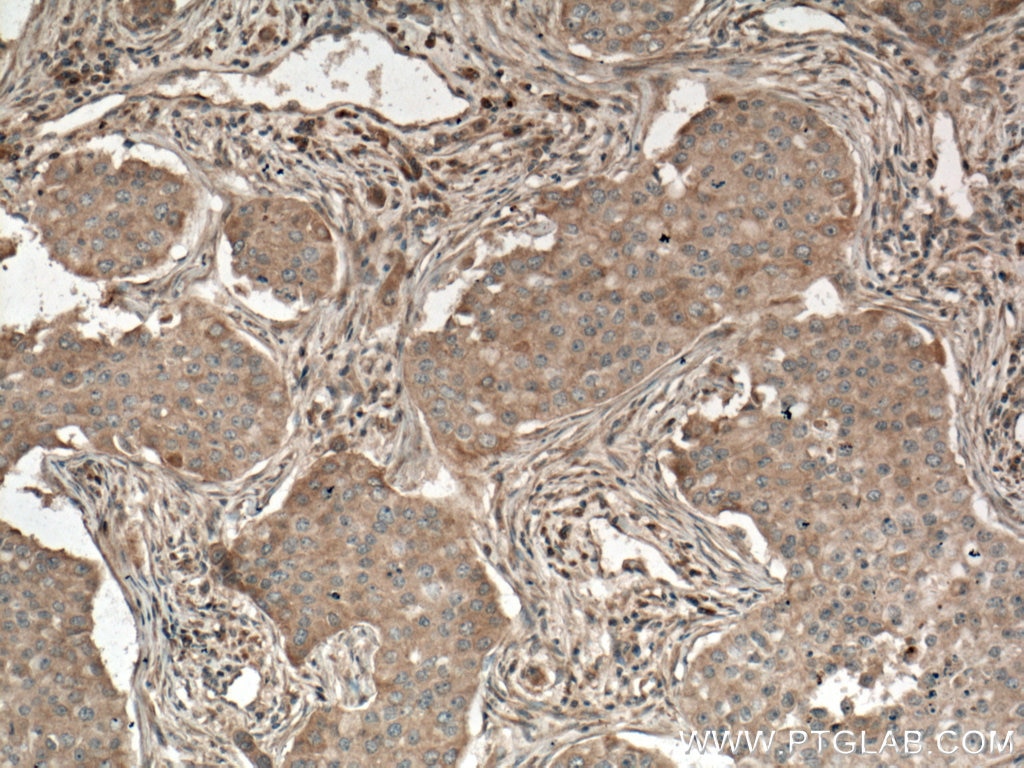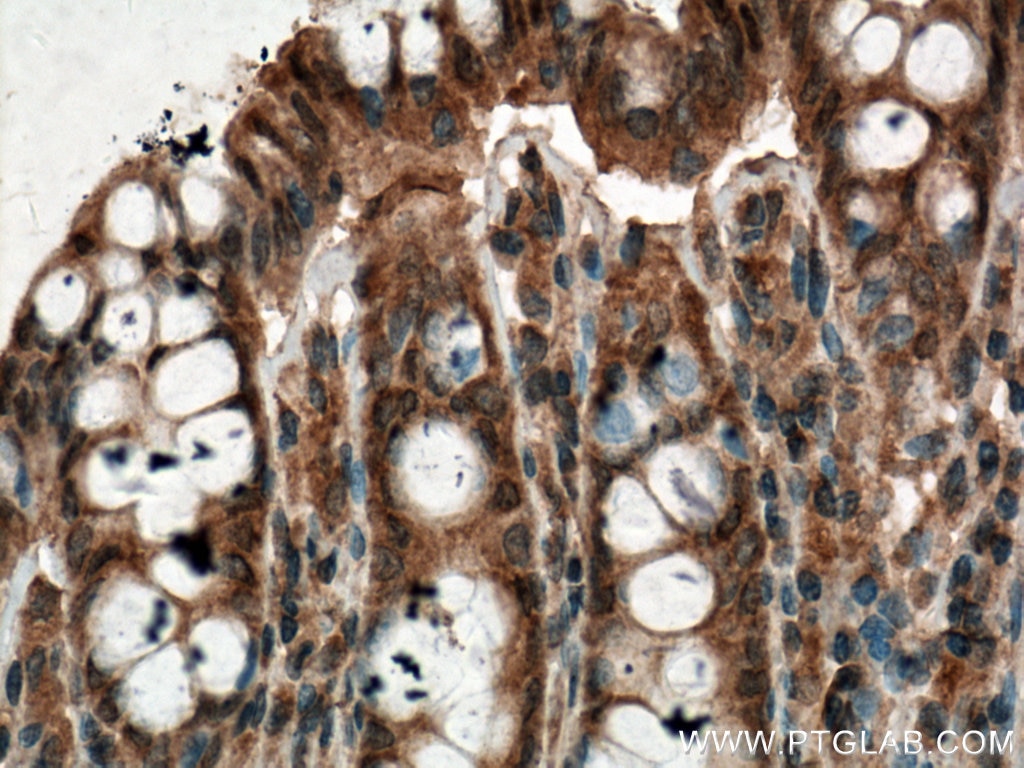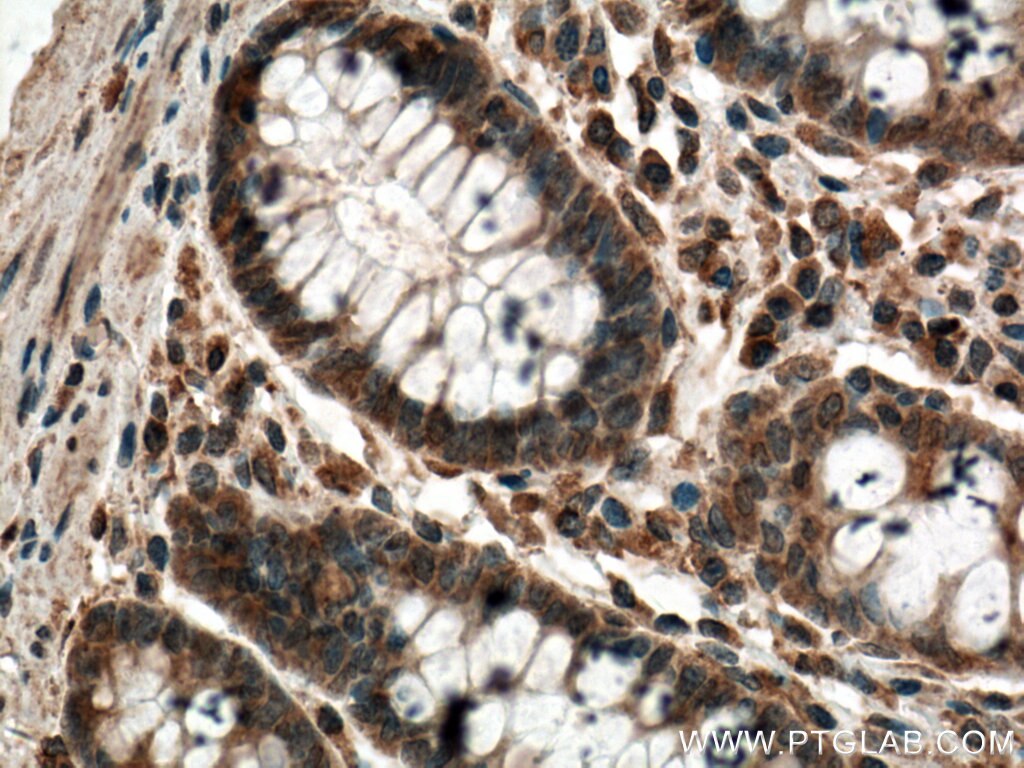Validation Data Gallery
Tested Applications
| Positive WB detected in | HepG2 cells, Jurkat cells, HSC-T6 cells, NIH/3T3 cells, HeLa cells, Sp2/0 cells, human peripheral blood platelets, HEK-293 cells, K-562, LNCaP cells, K-562 cells |
| Positive IHC detected in | human breast cancer tissue, human colon tissue Note: suggested antigen retrieval with TE buffer pH 9.0; (*) Alternatively, antigen retrieval may be performed with citrate buffer pH 6.0 |
Recommended dilution
| Application | Dilution |
|---|---|
| Western Blot (WB) | WB : 1:5000-1:50000 |
| Immunohistochemistry (IHC) | IHC : 1:50-1:500 |
| It is recommended that this reagent should be titrated in each testing system to obtain optimal results. | |
| Sample-dependent, Check data in validation data gallery. | |
Published Applications
| WB | See 4 publications below |
Product Information
66668-1-Ig targets PLCB3 in WB, IHC, ELISA applications and shows reactivity with human, mouse, rat samples.
| Tested Reactivity | human, mouse, rat |
| Cited Reactivity | human, rat |
| Host / Isotype | Mouse / IgG1 |
| Class | Monoclonal |
| Type | Antibody |
| Immunogen | PLCB3 fusion protein Ag15845 相同性解析による交差性が予測される生物種 |
| Full Name | phospholipase C, beta 3 (phosphatidylinositol-specific) |
| Calculated molecular weight | 1234 aa, 139 kDa |
| Observed molecular weight | 150 kDa |
| GenBank accession number | BC142681 |
| Gene Symbol | PLCB3 |
| Gene ID (NCBI) | 5331 |
| RRID | AB_2882022 |
| Conjugate | Unconjugated |
| Form | Liquid |
| Purification Method | Protein G purification |
| UNIPROT ID | Q01970 |
| Storage Buffer | PBS with 0.02% sodium azide and 50% glycerol pH 7.3. |
| Storage Conditions | Store at -20°C. Stable for one year after shipment. Aliquoting is unnecessary for -20oC storage. |
Background Information
PLCB3 is a member of the phosphoinositide phospholipase C beta enzyme family that catalyze the production of the secondary messengers diacylglycerol and inositol 1,4,5-triphosphate from phosphatidylinositol in G-protein-linked receptor-mediated signal transduction. Six subfamilies of PLCs (B, G, D, E, Z and H) constitute part of ubiquitous signaling cascades that translate hormonal signals into intracellular events, leading to alternations in cell function. PLCB isoforms 1-4 are stimulated by G-protein activation (Gαq/11 and/or Gβγ). Independent of its enzymatic activity, PLCB3 inhibits the proliferation of hematopoietic stem cells (HSCs) and myeloid cells.
Protocols
| Product Specific Protocols | |
|---|---|
| WB protocol for PLCB3 antibody 66668-1-Ig | Download protocol |
| IHC protocol for PLCB3 antibody 66668-1-Ig | Download protocol |
| Standard Protocols | |
|---|---|
| Click here to view our Standard Protocols |
Publications
| Species | Application | Title |
|---|---|---|
J Cell Mol Med Prenatal hypoxia inhibited propionate-evoked BK channels of mesenteric artery smooth muscle cells in offspring. | ||
J Food Biochem A novel di-peptide Met-Glu from collagen hydrolysates inhibits platelet aggregation and thrombus formation via regulation of Gq-mediated signaling. | ||
J Food Sci Tripeptide Hyp-Asp-Gly from collagen peptides inhibited platelet activation via regulation of PI3K/Akt-MAPK/ERK1/2 signaling pathway | ||
Toxicol Appl Pharmacol RGS2 attenuates alveolar macrophage damage by inhibiting the Gq/11-Ca2+ pathway during cowshed PM2.5 exposure, and aberrant RGS2 expression is associated with TLR2/4 activation |
